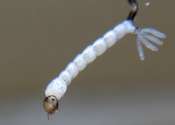Study shows copper beads in pig feed reshape swine gut microbiome
Copper is a natural antimicrobial material that, when added to pig feed, may promote the growth and health of the animals. Since pigs can tolerate high levels of the metal, researchers at Texas Tech University in Amarillo ...









